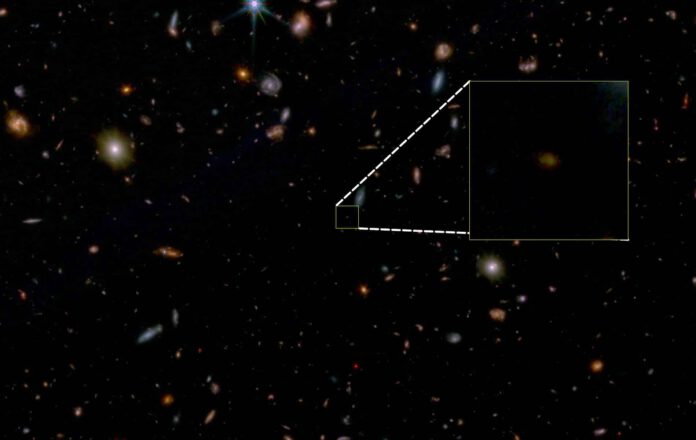
Research Unveils a Galaxy that Stopped Star-Formation Early in the Universe’s History
Scientists have made a fascinating discovery of a galaxy that essentially ‘died’ – that is, stopped forming new stars – when the universe was just 700 million years old, an occurrence that is highly unusual.
This discovery was detailed in a publication in the journal Nature. The study focuses on a galaxy that the researchers detected using the space telescope, James Webb. With this telescope, they could observe the galaxy as it was over 13 billion years ago, approximately 700 million years post-Big Bang. What immediately struck them was that the galaxy could be classified as ‘dead’ by astronomical standards since it ceased to form new stars. This is quite extraordinary, as scientists have indeed previously discovered such ‘dead’ galaxies in the young universe, but never so soon after the Big Bang.
The Small Size of the Galaxy
Another notable aspect was the galaxy’s relatively small mass; much smaller than the mass of ‘dead’ galaxies previously detected by Webb in the young universe. The mass of the observed galaxy was found to be comparable to that of the Small Magellanic Cloud, which is a dwarf galaxy situated near the Milky Way. This dwarf galaxy, however, is still forming new stars, whereas in the galaxy observed by Webb from 13 billion years ago, this has not been happening for millions of years, the researchers reported.
A Brief and Vibrant Existence
The studied galaxy must have had a brief, yet intense, existence. It is believed to have been actively producing stars for a period of 30 to 90 million years before abruptly ceasing. As per the research findings, we see the galaxy as it was about 13 billion years ago, and it likely stopped forming stars 10 to 20 million years prior to that time.
The Predominance of Gas in the Early Universe
This situation is rather perplexing, as researcher Tobias Looser pointed out. In the young universe, there was practically no reason for star formation to halt. “Galaxies need a rich supply of gas to form new stars and the early universe was akin to an ‘all you can eat buffet’,” Looser mentions. Gas was ubiquitous, hence, seemingly, nothing should have impeded star formation.
“It is only later that we see galaxies stop forming new stars,” researcher Francesco D’Eugenio points out. This halt could be due to depletion of the necessary ingredient for star creation – gas. This could occur, for instance, if a black hole expels the gas enthusiastically from the galaxy. Or if the galaxy rapidly gives birth to new stars without replenishing the gas supply. “We are uncertain whether such scenarios can explain what we have now observed with Webb,” researcher Roberto Maiolino expressed. “Everything in the young universe appears to have unfolded quicker and more dramatically,” Looser inputted. This might also be the case for the transition of galaxies from a star-forming phase to a phase where no new stars were formed.
The Possibility of a Galaxy’s ‘Resurrection’
At the same time, the researchers cannot entirely rule out that the galaxy, as viewed approximately 13 billion years ago, resuscitated at some point over the years that have passed since then. They aspire to gain more clarity by tracking down and studying contemporaries of this galaxy. “We are looking for other galaxies in the young universe that resemble this one,” D’Eugenio explains. “This could help us understand how and why galaxies stop forming new stars. It may be that galaxies in the young universe ‘die’ and then ‘resurrect’ – more observations are needed to figure this out.”











